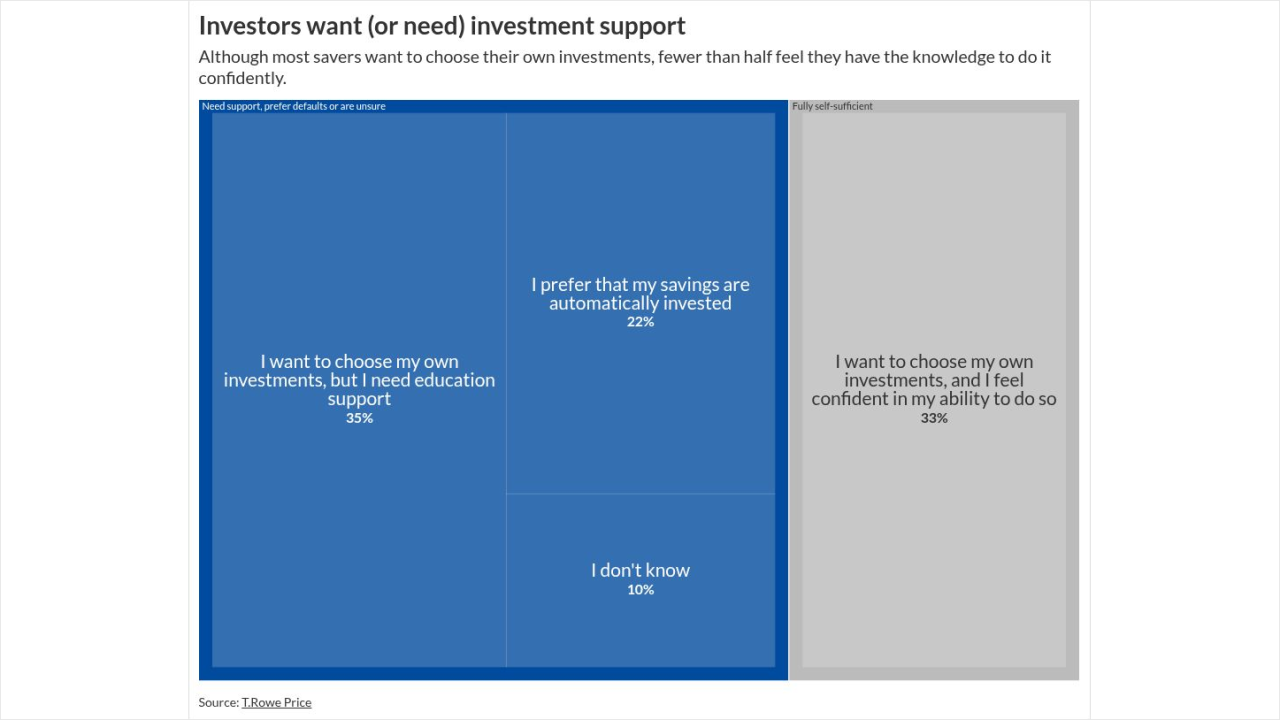Health savings accounts are a small but mighty tool when it comes to saving and investing money for retirement. Yet a vast majority of savers do not invest their HSA funds, according to a
The research, looking at more than 14.5 million
A combination of factors, including clunky investment platforms, balance thresholds and a
READ MORE:
"Many companies require employees to utilize a captive custodian, and there is a lot of paperwork and separate accounts and then transfers required to begin the investment process," said Sammy Grant, principal at Homrich Berg in Sandy Springs, Georgia. "So, it's not a lack of interest or desire but a frustration with the hassle factor or a lack of investment options with the employer's chosen provider."
Savers fall short of common investment thresholds
While rules vary, many
The institute's research indicates that employer contributions could play a role in boosting HSA investment. Accounts with invested assets saw a higher average employer contribution of $1,041, in contrast to accounts without invested assets, which averaged $694 in employer contributions.
"This result suggests that having an employer contribution could make account holders feel more comfortable investing at least some portion of their HSAs or that account owners with higher balances are more engaged because they have more at stake," EBRI researchers Jake Spiegel and Paul Fronstin wrote. "This could also indicate that these employers are more engaged with helping employees see the value of using HSAs as longer-term savings vehicles."
READ MORE:
Data shows that accounts with invested assets had an average balance of $23,583, more than sevenfold the $2,795 average for accounts without invested assets. Researchers say that difference is likely driven by a variety of factors, including the worker's ability to contribute and save more of their income.
"Account holders with invested assets may be in a better position to invest precisely because they are able to contribute more," researchers wrote.
While employer contributions could encourage HSA investing, researchers note that such contributions are not a "magic bullet."
"Providing an employer contribution to an HSA will not automatically turn that account holder into an investor who uses their HSA as a long-term savings vehicle instead of a short-term spending vehicle," researchers wrote. "Indeed, account holders with employer contributions still take larger distributions than their counterparts who did not receive an employer contribution."
Can advisors help clients overcome investment barriers?
Advisors say that
"My clients understand the long-term benefits of investing their HSA, but the main barrier is usually cash flow," said Dave Flegal, founder of Flegal Financial Planning in Cleveland, Ohio. "If they can't afford to cover medical expenses without tapping into their HSA, they're hesitant to invest those funds."
For clients who may need to take distributions from their HSA, advisors say that keeping the funds in cash can be a smart decision.
"I only have clients invest the portion of the account that exceeds their annual deductible on their health insurance," said Filip Telibasa, owner of Benzina Wealth in Sarasota, Florida. "This way, if they have unexpected medical expenses, the funds are not invested and exposed to short-term market risk. The remainder of the account should be invested similarly to retirement accounts, as it has a long time horizon and grows tax-deferred and tax-free if used for medical expenses. By taking more risk with this portion of the account, we maximize our long-term benefits without compromising risk over the short term."
READ MORE:
Some planners advise their high-earning clients to pay for medical expenses with their regular savings, leaving HSA funds free to be invested tax-free as an additional retirement account.
The account name itself — health savings account — also confuses many savers, advisors say.
"Many people are unaware that investing their HSA funds is even an option," said Hardik Patel, founder of Trusted Path Wealth Management in Santa Rosa, California. "Some mistakenly believe HSAs operate like FSAs [
While advisors can't overcome all the financial barriers that prevent many HSA account holders from investing their funds, education alone can make a difference for some savers.
"Once clients understand how these accounts work in plain English and comprehend their substantial benefits, they typically have an eye-opening experience," said Kevin Feig, founder of Walk You To Wealth in Boston. "Explaining the potential for them to never pay taxes often elicits a strong reaction."






